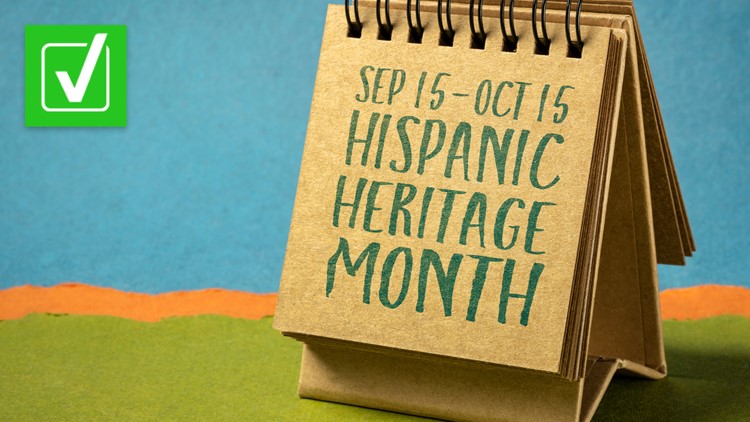Sept. 15 marks the start of Hispanic Heritage Month, a month in which the U.S. honors and celebrates the history and culture of Americans who were born in or whose ancestors came from Spain, Mexico, Central America, the Caribbean and South America.
But most cultural heritage months begin on the first of the month, not a date in the middle of the month. Many people this past week have been going to Google to ask why Hispanic Heritage Month begins on the 15th. Some people on social media have claimed the date is related to the independence of multiple Latin American countries.
THE QUESTION
Does Hispanic Heritage Month start on Sept. 15 because it’s the independence day for several Latin American countries?
THE SOURCES
hispanicheritagemonth.gov, a website run in collaboration by several government institutions
Enforex, an organization that specializes in teaching Spanish as a foreign language
THE ANSWER
Yes, Hispanic Heritage Month does start on Sept. 15 because it’s the independence day for several Latin American countries.
WHAT WE FOUND
Hispanic Heritage Month begins Sept. 15 and ends Oct. 15. Sept. 15 is the independence day for five countries in Central America.
The month first began as Hispanic Heritage Week under President Lyndon Johnson in 1968, according to hispanicheritagemonth.gov, a website run in collaboration by several government institutions. Congress passed a bill to authorize and request the president issue an annual proclamation designating the week that includes Sept. 15 and 16 as National Hispanic Heritage Week, the Library of Congress says.
Johnson’s first such proclamation, as archived in UC Santa Barbara’s American Presidency Project, explained the significance of those dates:
“Wishing to pay special tribute to the Hispanic tradition, and having in mind the fact that our five Central American neighbors celebrate their Independence Day on the fifteenth of September and the Republic of Mexico on the sixteenth, the Congress, by House Joint Resolution 1299, has requested the President to issue annually a proclamation designating the week including September 15 and 16 as National Hispanic Heritage Week.”
Costa Rica, El Salvador, Guatemala, Honduras and Nicaragua are the five Central American countries that celebrate their independence days on the 15th, the Library of Congress says. Mexico celebrates its independence day the next day, on the 16th.
All six countries were part of the Viceroyalty of New Spain, a Spanish colony. On the night of Sept. 15, 1810, Miguel Hidalgo y Costilla began his rebellion against Spain in the Mexican town of Dolores, now Dolores Hidalgo. He released the pro-independence inmates from the town’s prison overnight and by the dawn of Sept. 16, Hidalgo rang the town’s church bells and made his “Shout of Independence,” the Government of Mexico says.
The Library of Congress says Presidents Richard Nixon, Gerald Ford, Jimmy Carter and Ronald Reagan continued to issue annual proclamations that designated a week in September, including September 15 and 16, as National Hispanic Heritage Week.
Then in 1988, Congress expanded on National Hispanic Heritage Week by passing a law to establish the 31-day period beginning Sept. 15 and ending on Oct. 15 as National Hispanic Heritage Month. President George H.W. Bush issued the first such proclamation in 1989, the Library of Congress says. Every president since then has continued to issue annual proclamations to kick off National Hispanic Heritage Month.
While Sept. 15 was chosen as the start date because of its historical significance to the United States’ closest neighbors, the month also includes dates significant to other Latin American nations. Sept. 18 is Chile’s independence day, hispanicheritagemonth.gov says.
And Oct. 12, the day Christopher Columbus first saw land in the New World, is celebrated as Día de la Raza — Day of the People — in much of Latin America, according to Enforex, an organization that specializes in teaching Spanish as a foreign language. In those countries, the holiday is spent celebrating indigenous people, and several Latin American countries have renamed the holiday to reflect that.



